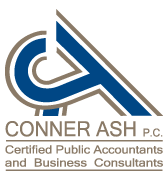
These days, most businesses need a website to remain competitive. It’s an easy decision to set one up and maintain it. But determining the proper tax treatment for the costs involved in developing a website isn’t so easy.
That’s because the IRS hasn’t released any official guidance on these costs yet. Consequently, you must apply existing guidance on other costs to the issue of website development costs.
Hardware and software
First, let’s look at the hardware you may need to operate a website. The costs involved fall under the standard rules for depreciable equipment. Specifically, once these assets are up and running, you can deduct 100% of the cost in the first year they’re placed in service (before 2023). This favorable treatment is allowed under the 100% first-year bonus depreciation break.
In later years, you can probably deduct 100% of these costs in the year the assets are placed in service under the Section 179 first-year depreciation deduction privilege. However, Sec. 179 deductions are subject to several limitations.
For tax years beginning in 2019, the maximum Sec. 179 deduction is $1.02 million, subject to a phaseout rule. Under the rule, the deduction is phased out if more than a specified amount of qualified property is placed in service during the year. The threshold amount for 2019 is $2.55 million.
There’s also a taxable income limit. Under it, your Sec. 179 deduction can’t exceed your business taxable income. In other words, Sec. 179 deductions can’t create or increase an overall tax loss. However, any Sec. 179 deduction amount that you can’t immediately deduct is carried forward and can be deducted in later years (to the extent permitted by the applicable limits).
Similar rules apply to purchased off-the-shelf software. However, software license fees are treated differently from purchased software costs for tax purposes. Payments for leased or licensed software used for your website are currently deductible as ordinary and necessary business expenses.
Software developed internally
If your website is primarily for advertising, you can also currently deduct internal website software development costs as ordinary and necessary business expenses.
An alternative position is that your software development costs represent currently deductible research and development costs under the tax code. To qualify for this treatment, the costs must be paid or incurred by December 31, 2022.
A more conservative approach would be to capitalize the costs of internally developed software. Then you would depreciate them over 36 months.
Third party payments
Some companies hire third parties to set up and run their websites. In general, payments to third parties are currently deductible as ordinary and necessary business expenses.
Before business begins
Start-up expenses can include website development costs. Up to $5,000 of otherwise deductible expenses that are incurred before your business commences can generally be deducted in the year business commences. However, if your start-up expenses exceed $50,000, the $5,000 current deduction limit starts to be chipped away. Above this amount, you must capitalize some, or all, of your start-up expenses and amortize them over 60 months, starting with the month that business commences.
We can help
We can determine the appropriate treatment for these costs for federal income tax purposes. Contact us if you have questions or want more information.
© 2019










